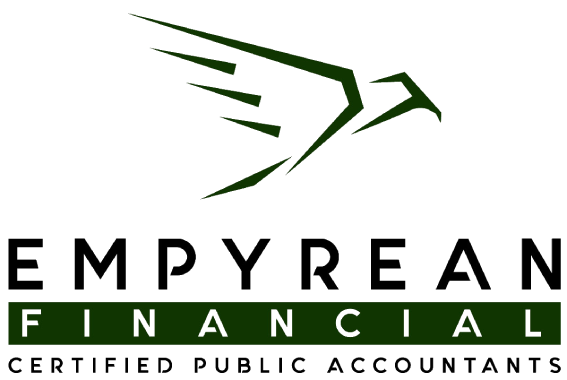As Q2 rolls in, it’s the perfect time to pause, evaluate, and act on key tax strategies that can reduce your liability and strengthen your financial position for the rest of the year. While Q1 is often focused on filing, Q2 is your opportunity to plan—and the decisions you make now can significantly impact your year-end outcome.
At Empyrean Financial CPAs, we believe in year-round strategy—not last-minute scrambles. Here are the best tax-saving strategies to implement in Quarter 2 (April–June) for individuals and small business owners alike.

1. Review Your Estimated Tax Payments
If you’re self-employed, run a business, or earn significant non-W-2 income, Q2 is when your second estimated tax payment is due (June 17, 2025).
Why it matters:
- Prevent underpayment penalties
- Align payments with updated income trends
- Preserve cash flow and avoid surprises
Tip: Recalculate based on Q1 performance and updated projections. Overpaying hurts your liquidity. Underpaying triggers penalties.
2. Max Out Tax-Advantaged Accounts (So Far)
Tax-deferred and tax-free accounts like 401(k)s, IRAs, and HSAs are long-term strategies—but checking in mid-year ensures you’re on track.
- 401(k): Max contribution limit for 2025 is $23,000 (or $30,500 if over 50)
- IRA: Up to $7,000 for individuals under 50; $8,000 if over 50
- HSA: $4,150 for individuals; $8,300 for families
Pro Tip: Even partial contributions now reduce your adjusted gross income (AGI) and lower your tax liability.
3. Perform a Mid-Year Withholding Check
Are you withholding too much (and giving the IRS an interest-free loan)? Or too little (and setting yourself up for a tax bill)? Now’s the time to fix it.
Use the IRS Withholding Estimator or consult your CPA to adjust:
- W-4 if you’re an employee
- State tax withholdings if applicable
- Additional withholding if you had life changes (marriage, baby, home purchase, etc.)
Even a small mid-year adjustment can make a huge difference in April.
4. Track Business Deductions in Real Time
Q2 is a great moment to tighten your bookkeeping systems so you don’t miss deductions later. Don’t rely on memory or bank statements at year-end!
Top missed deductions to review:
- Business use of home or vehicle
- Professional development & education
- Software subscriptions
- Contractor payments (don’t forget 1099-NEC reporting prep!)
- Travel and meals (with client or biz purpose)
Set up regular bookkeeping reviews with your CPA. Clean books = better tax outcomes.
5. Consider Equipment or Technology Purchases
If you’re planning to invest in new software, computers, or business tools this year, Q2 is an ideal time to do it. Why?
- You’ll start depreciating or expensing them earlier (Section 179 or bonus depreciation)
- You’ll gain the benefit of use AND the tax deduction in the same year
Talk with your CPA to determine whether it makes sense to capitalize or expense—and how it aligns with your income strategy.
6. Reevaluate Your Business Entity
As your income or operations change, so should your business structure.
- Are you still a sole proprietor or single-member LLC?
- Would electing S Corp status help reduce your self-employment tax burden?
- Is your current setup still tax-efficient based on your growth?
Q2 is the right time to review this—not Q4 when planning options are limited.
7. Set Up or Review a Retirement Plan (for Business Owners)
If you don’t yet have a SEP IRA, SIMPLE IRA, or Solo 401(k), Q2 is a fantastic time to launch one.
- Contributions are deductible
- Can reduce current-year tax burden
- Boosts your retirement savings and employee retention if applicable
Already have one? Review contribution limits and increase if possible to reduce liability and shelter income.
8. Meet with Your CPA Now—Not in Q4
A proactive 30-minute check-in with your CPA in Q2 can help you:
- Reassess projections
- Find missing opportunities
- Avoid tax-time scrambling
- Plan for life or business changes
At Empyrean Financial CPAs, we help clients use Q2 as a launchpad for smarter tax planning—not just compliance.
Final Thoughts
Tax planning doesn’t stop after you file your return. In fact, Q2 is where great tax strategy begins. The moves you make now set the tone for the rest of the year—whether that means higher savings, better cash flow, or simply less stress.
Need help implementing these Q2 tax strategies?
Let Empyrean Financial CPAs help you plan now, so you can thrive later.







